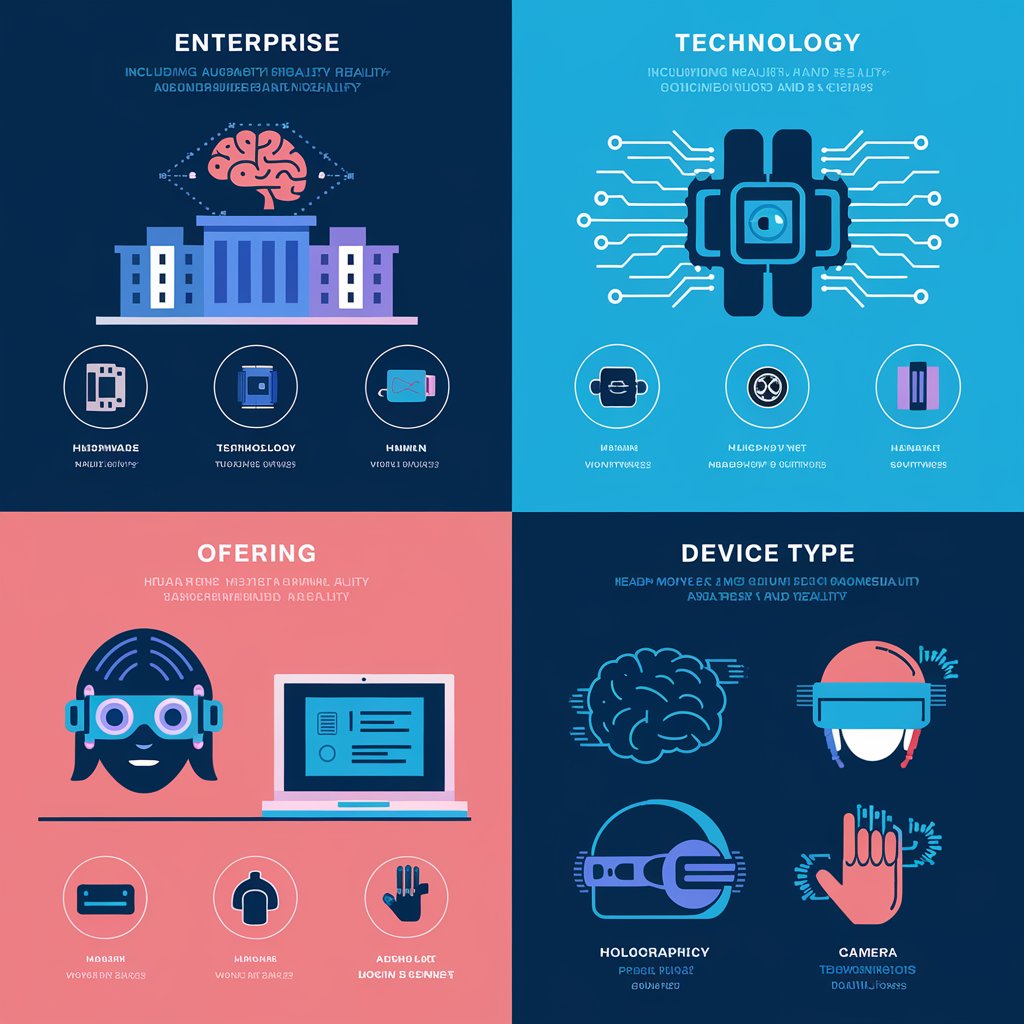The fields of gaming, education, healthcare, retail, and manufacturing are all being drastically changed by the quickly developing augmented reality (AR) and virtual reality (VR) industries. These immersive technologies are becoming essential tools for improving corporate processes, solving real-world problems, and providing customers with experiences never seen before. They are no longer just for amusement. The applications and impact of AR and VR technologies are expected to grow across industries as they develop, establishing them as key technologies in the digital environment of the future. This article examines the major developments influencing AR and VR in the future as well as the effects they will have on different industries.
Key Trends Shaping the AR and VR Industry
Integration with AI and Machine Learning
One of the most intriguing developments in the field is the combination of AR and VR with AI and machine learning. By facilitating more individualized, context-aware experiences, AI significantly enhances the functionality of AR and VR. AI-powered AR glasses, for example, may evaluate real-time data and superimpose pertinent information according to user context, improving decision-making in domains such as engineering and healthcare.
5G and Edge Computing
It is anticipated that the introduction of 5G networks would transform AR and VR experiences. 5G will enable real-time immersive experiences, especially in mobile VR apps, thanks to its low latency and fast connectivity. By processing data closer to the consumer, edge computing will further enhance these experiences by decreasing lag and enhancing interaction and graphics quality. 5G and edge computing together will create new opportunities for AR and VR in domains like gaming, real-time simulations, and remote collaboration.
Expansion in Enterprise Applications
Although AR and VR have historically been linked to entertainment and games, their use in business applications is growing. These technologies are being used for maintenance, design visualization, and virtual training in sectors like manufacturing, automotive, and construction. AR is helping with diagnoses and precisely guiding surgery in the healthcare industry, while VR is being used for surgical simulations and mental health therapies.
Growing Popularity of Mixed Reality (MR)
A growing trend is mixed reality (MR), which blends aspects of AR and VR to produce a realistic setting where digital and real-world items interact. Users can control and interact with digital and physical elements in a single, cohesive experience with MR. In industries where professionals can visualize and interact with complex models or data in real-time, like engineering, retail, and education, this feature is especially helpful.
Consumer Wearables and Devices
The high price and size of headsets and other equipment have been major obstacles to the adoption of AR and VR. However, developments in wearable technology are propelling the creation of AR and VR gadgets that are more reasonably priced, portable, and easy to use. In an effort to make immersive experiences more widely available, major businesses including Apple, Facebook (Meta), and Google are aggressively developing the next generation of AR glasses and VR headsets.

Impacts Across Various Sectors
Healthcare
By providing cutting-edge approaches to patient care, medical education, and therapy, AR and VR are completely changing the healthcare industry. By practicing intricate procedures in virtual reality (VR) simulations, surgeons can increase accuracy and lower the chance of mistakes. By superimposing MRI or CT scans onto a patient’s body, AR can offer real-time data during surgery, enabling better decision-making. VR exposure therapy has demonstrated encouraging outcomes in the treatment of anxiety disorders, PTSD, and phobias.
Education and Training
AR and VR are revolutionizing the healthcare sector by offering innovative methods for patient care, medical education, and therapy. Surgeons can improve accuracy and reduce errors by practicing complex procedures in virtual reality (VR) simulators. AR can provide real-time data during surgery by superimposing CT or MRI scans onto a patient’s body, facilitating better decision-making. VR exposure therapy has shown promising results in treating phobias, PTSD, and anxiety disorders.
Retail and E-Commerce
AR is changing how customers engage with things in retail. Before making a purchase, users can use augmented reality (AR) applications to see how items like apparel or furniture would appear on their bodies or in their homes. Customers may shop from the comfort of their homes and interact with products in a simulated environment with VR’s virtual store experiences. This trend is enhancing consumer happiness, decreasing return rates, and changing the way people shop online.
Manufacturing and Design
Manufacturing is using AR and VR more and more for quality control, product design, and prototyping. By enabling engineers and designers to see intricate systems and designs in authentic environments, augmented reality applications boost productivity and lower manufacturing errors. Manufacturers can save time and money by using virtual reality (VR) for virtual prototyping, which allows them to test items in a virtual setting prior to actual production.
Challenges and Future Prospects
Even if AR and VR have a bright future, the business still faces obstacles to overcome. The high expense of creating and deploying AR and VR solutions is one of the main obstacles, particularly for small and medium-sized businesses. To maintain user trust, privacy and security issues pertaining to data collecting in immersive environments must also be resolved.
AR and VR are anticipated to become commonplace in a variety of industries in the future as costs fall down and technology keeps improving. AR and VR have the potential to improve human experiences, boost productivity, and resolve challenging issues, which guarantees that these technologies will be crucial in determining how the digital world develops in the future.
With advancements in wearable technology, 5G, and artificial intelligence driving its expansion, the AR and VR sector is leading the way in digital transformation. The effects of these technologies will be extensive as their uses spread beyond entertainment to industries including healthcare, education, retail, and manufacturing. Even if there are still obstacles to overcome, AR and VR have a bright future ahead of them, with countless opportunities for consumers and businesses alike.
